Related Research Articles

The Ulster Volunteer Force (UVF) is an Ulster loyalist paramilitary group. Formed in 1965, it first emerged in 1966. Its first leader was Gusty Spence, a former British Army soldier from Northern Ireland. The group undertook an armed campaign of almost thirty years during The Troubles. It declared a ceasefire in 1994 and officially ended its campaign in 2007, although some of its members have continued to engage in violence and criminal activities. The group is a proscribed organisation and is on the terrorist organisation list of the United Kingdom.

John Adair, better known as Johnny Adair or Mad Dog Adair, is an Ulster loyalist and the former leader of the "C Company", 2nd Battalion Shankill Road, West Belfast Brigade of the Ulster Freedom Fighters (UFF). This was a cover name used by the Ulster Defence Association (UDA), a loyalist paramilitary organisation. In 2002 Adair was expelled from the organisation following a violent internal power struggle. Since 2003, he, his family and a number of supporters have been forced to leave Northern Ireland by the mainstream UDA.
A loyalist feud refers to any of the sporadic feuds which have erupted almost routinely between Northern Ireland's various loyalist paramilitary groups during and after the ethno-political conflict known as the Troubles broke out in 1969. The feuds have frequently involved problems between and within the Ulster Defence Association (UDA) and the Ulster Volunteer Force (UVF) as well as, later, the Loyalist Volunteer Force (LVF).
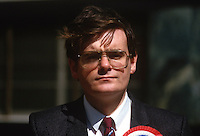
George Seawright was a Scottish-born unionist politician in Northern Ireland and loyalist paramilitary in the Ulster Volunteer Force. He was assassinated by the Irish People's Liberation Organisation in 1987.

Augustus Andrew Spence was a leader of the paramilitary Ulster Volunteer Force (UVF) and a leading loyalist politician in Northern Ireland. One of the first UVF members to be convicted of murder, Spence was a senior figure in the organisation for over a decade.

Ulster Resistance (UR), or the Ulster Resistance Movement (URM), is an Ulster loyalist paramilitary movement established by the Democratic Unionist Party (DUP) in Northern Ireland in November 1986 in opposition to the Anglo-Irish Agreement.

John Gregg was a senior member of the UDA/UFF loyalist paramilitary organisation in Northern Ireland. In 1984, Gregg seriously wounded Sinn Féin president Gerry Adams in an assassination attempt. From the 1990s until he was shot dead in 2003 by rival associates, Gregg served as brigadier of the UDA's South East Antrim Brigade. Widely known as a man with a fearsome reputation, Gregg was considered a "hawk" in some loyalist circles.
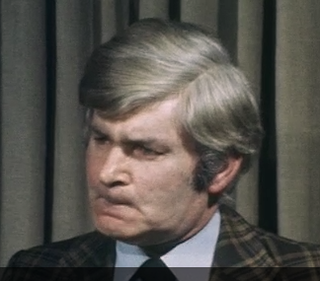
John Dunlop McKeague was a Northern Irish loyalist and one of the founding members of the paramilitary group the Red Hand Commando in 1970. Authors on the Troubles in Northern Ireland have accused McKeague of involvement in the Kincora Boys' Home scandal but he was never convicted. He was shot dead by the Irish National Liberation Army (INLA) in Belfast in January 1982.
Andrew Tyrie is a Northern Irish loyalist paramilitary leader who served as commander of the Ulster Defence Association (UDA) during much of its early history. He took the place of Tommy Herron in 1973 when the latter was killed, and led the organisation until March 1988 when an attempt on his life forced him to resign from his command.
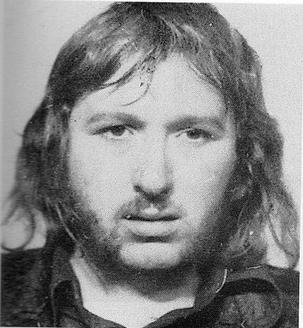
Robert William Bates was a Northern Irish loyalist. He was a member of the Ulster Volunteer Force and the infamous Shankill Butchers gang, led by Lenny Murphy.
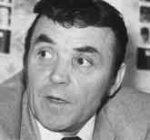
Tommy "Tucker" Lyttle, was a high-ranking Ulster loyalist during the period of religious-political conflict in Northern Ireland known as "the Troubles". A member of the Ulster Defence Association (UDA) – the largest loyalist paramilitary organisation in Northern Ireland – he first held the rank of lieutenant colonel and later was made a brigadier. He served as the UDA's spokesman as well as the leader of the organisation's West Belfast Brigade from 1975 until his arrest and imprisonment in 1990. According to journalists Henry McDonald and Brian Rowan, and the Pat Finucane Centre, he became a Royal Ulster Constabulary (RUC) Special Branch informer.

Frankie Curry was a Northern Irish loyalist who was involved with a number of paramilitary groups during his long career. A critic of the Northern Ireland peace process, Curry was killed during a loyalist feud.

William Mitchell was a Northern Ireland loyalist, community activist and member of the Progressive Unionist Party. Mitchell was a leading member of the loyalist Ulster Volunteer Force (UVF) and served a life sentence for his part in a double murder. He later abandoned his UVF membership and took up cross-community work.
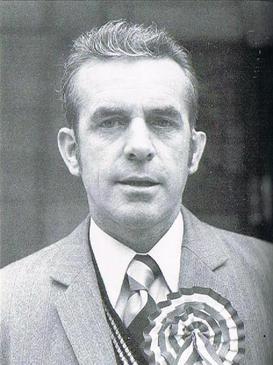
Kenneth Gibson was a Northern Irish politician who was the Chairman of the Volunteer Political Party (VPP), which he had helped to form in 1974. He also served as a spokesman and Chief of Staff of the loyalist paramilitary organisation, the Ulster Volunteer Force (UVF).
William Elliot was a former Northern Irish loyalist who served as brigadier of the Ulster Defence Association's (UDA) East Belfast Brigade in the 1980s.

Richard Jameson, was a Northern Irish businessman and loyalist, who served as the leader of the paramilitary Ulster Volunteer Force's (UVF) Mid-Ulster Brigade. He was killed outside his Portadown home during a feud with the rival Loyalist Volunteer Force (LVF), the breakaway organisation founded by former Mid-Ulster UVF commander Billy Wright after he and the Portadown unit of the Mid-Ulster Brigade were officially stood down by the Brigade Staff in August 1996.
Jackie Mahood is a Northern Irish former loyalist activist with both the Ulster Volunteer Force (UVF) and Progressive Unionist Party (PUP). He later split from these groups and became associated with the breakaway Loyalist Volunteer Force (LVF), founded in 1996 by Billy Wright.

The Young Citizen Volunteers of Ireland, or Young Citizen Volunteers (YCV) for short, was a British civic organisation founded in Belfast in 1912 which later became the youth wing of Ulster loyalist paramilitary group the Ulster Volunteer Force. It was established to bridge the gap for 18 to 25 year olds between membership of youth organisations—such as the Boys' Brigade and Boy Scouts—and the period of responsible adulthood. Another impetus for its creation was the failure of the British government to extend the legislation for the Territorial Force—introduced in 1908—to Ireland. It was hoped that the War Office would absorb the YCV into the Territorial Force, however such offers were dismissed. Not until the outbreak of World War I did the YCV—by then a battalion of the UVF—become part of the British Army as the 14th Battalion of the Royal Irish Rifles.

The Irish National Liberation Army Belfast Brigade was the main brigade area of the Irish National Liberation Army (INLA). The other Brigade areas were in Derry which was split between two battalions, the first in Derry City, and the second battalion in south County Londonderry and County Armagh which was also split into two battalions, a south Armagh and a north Armagh battalion, with smaller units in Newry, east and west County Tyrone and south County Fermanagh.
Martin "Rook" O'Prey was an Irish republican and a Volunteer in both Irish republican and Revolutionary socialist paramilitary groups, first the Irish National Liberation Army (INLA) and later the Irish People's Liberation Organisation (IPLO). He was killed by Ulster Loyalist paramilitaries from the Ulster Volunteer Force (UVF) in August 1991.
References
- ↑ "Life for 2 Protestant terrorists", Philadelphia Inquirer , 12 April 1983.
- 1 2 3 4 Moloney, Ed (2010). Voices From the Grave: Two Men's War in Ireland. Haber & Haber. pp.377-378
- ↑ 'In pictures: Ian Paisley'. BBC News, 12 September 2014, retrieved 13 September 2023
- ↑ Hugh Jordan, Milestones in Murder
- ↑ "Abstracts on Organisations - 'U' Archived 22 February 2011 at the Wayback Machine ", CAIN.ulst.ac.uk; accessed 11 November 2015.
- ↑ David Lister & Hugh Jordan, Mad Dog: The Rise and Fall of Johnny Adair and 'C' Company, Edinburgh: Mainstream Publishing, 2004, ISBN 1840188901, p. 103
- ↑ "Sutton Index of Deaths 1991". Archived from the original on 14 May 2011. Retrieved 22 January 2017.
- ↑ The Irish Emigrant Archived 2012-03-27 at the Wayback Machine , emigrant.ie, 18 January 1993.
- ↑ Henry McDonald & Jim Cusack, UDA - Inside the Heart of Loyalist Terror, Penguin Ireland, 2004, p. 219
- 1 2 David Gordon, "McCord: British government colluded with terrorist organisations and should apologise" Archived 21 December 2009 at the Wayback Machine , Belfast Telegraph , 17 December 2009.
- ↑ Dillon, Martin (1989). The Shankill Butchers: the real story of cold-blooded mass murder. New York: Routledge. p. 133
- ↑ Wood, Ian S. (2006). Crimes of Loyalty: A History of the UDA. Edinburgh: Edinburgh University Press. p.257
- ↑ McDonald & Cusack, UDA, p. 340
- ↑ "Bunter Snubbed Parade to Go On Sunshine Junket", Sunday World , 27 May 2012